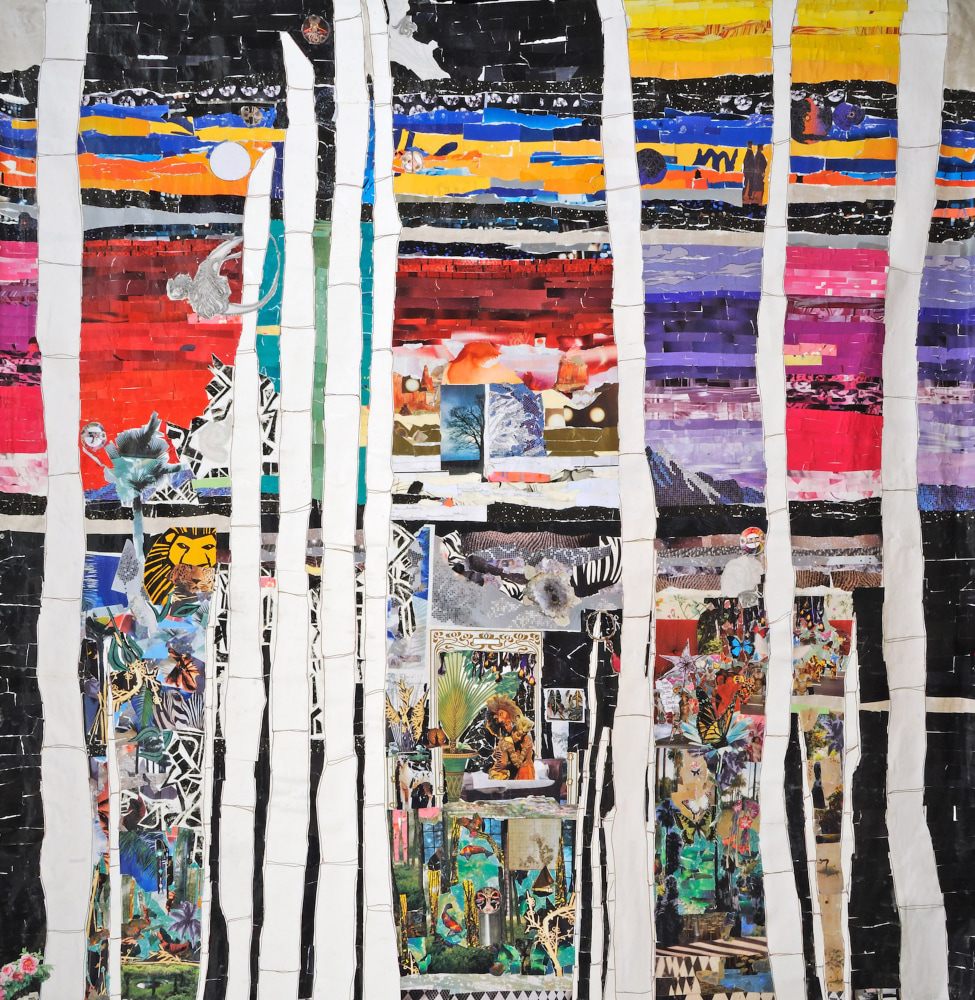
Process-based abstraction has always been a staple of painting in D.C. The Washington Color School was built by artists who defined their work by their approach to the canvas, whether by staining it or draping it or something else. MORE or LESS, a group show on view at Hemphill Fine Arts, shows how new trends in contemporary painting continue to line up with the work that put D.C. on the map in the 1960s and ’70s.
First are the Washington Color School works themselves: “Javelin” (1974), a tightly wound stripe painting by Gene Davis, and “Tenth Apple” by Thomas Downing (1978), a much looser series of acrylic dots on a brown paper bag. These works could be bookends to a show that otherwise features emerging artists (few of them regulars from Hemphill’s staple). Amber Robles-Gordon’s “Interdimensional Realms I” (2017), a piece that looks like an Alma Thomas painting shredded into ribbons, shows how some of the new D.C. vanguard are still processing works by the older generation.
Ryan Crotty has been on a roll since his New York gallery debut earlier this year, and the Nebraska artist’s rich paintings have a strong resonance in D.C. Made with acrylic, gloss gel, and modeling paste, Crotty’s paintings feature deep, seductive surfaces that call to mind the work of Hemphill artist Leon Berkowitz. (His 1979 painting, “Coronation,” is a highlight in the National Gallery of Art’s East Building.) Crotty’s “Eyes Closed to the Sun” (2018) shares the Ab-Ex love of heavy luminous pools of paint, but it’s rimmed with bolts of throbbing color. It’s like looking at a Mandelbrot set that melts before your eyes.
Robert Otto Epstein’s “6DJ39$aW23f49!” (2018), a zig-zag painting of chevrons made up of tiny squares of colored pencil, conveys a state of frantic urgency that is in fact highly proscribed and contained. Zany on the surface, his works share the same bearing as much heavier process paintings, from Robin Rose’s “Deep Breathing” (2018) to Douglas Witmer’s “When in Doubt” (2015). Another point of relief comes in Anna U. Davis’ “Pandora’s Box” (2016), a figurative, almost low-brow drawing that wouldn’t normally fit the gallery’s abstract sensibility. Yet the figures blend together, more like a pattern than a crowd.
The highlight in MORE or LESS is Amy Pleasant’s “Bust (front) and Bust (back)” (2017), a silhouette of a woman’s torso in the style of an Ellsworth Kelly shape or a Matisse cutout. Less is more in this winking Minimalist drawing. More is more throughout the show—a satisfying essay on the durability of abstraction.